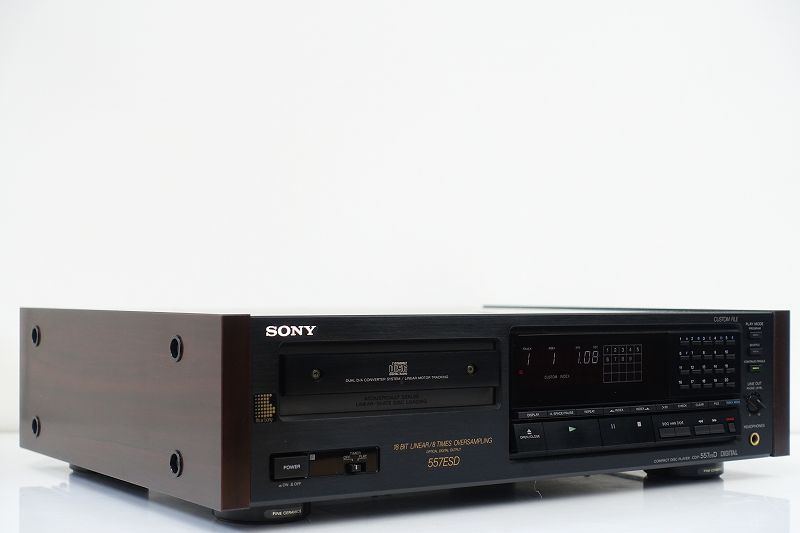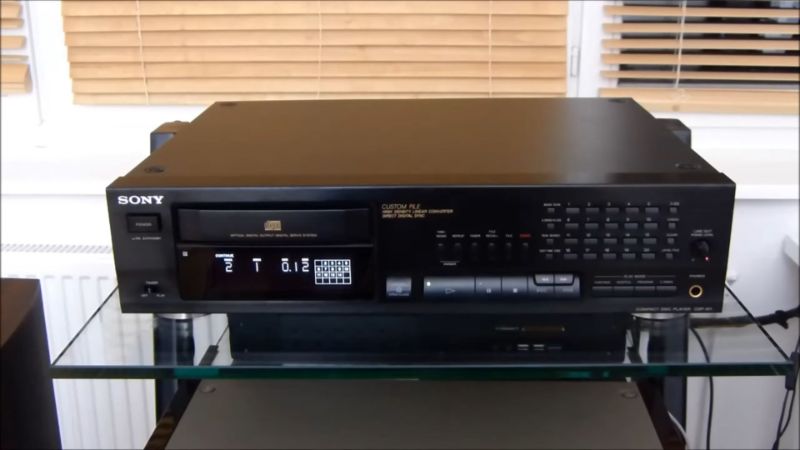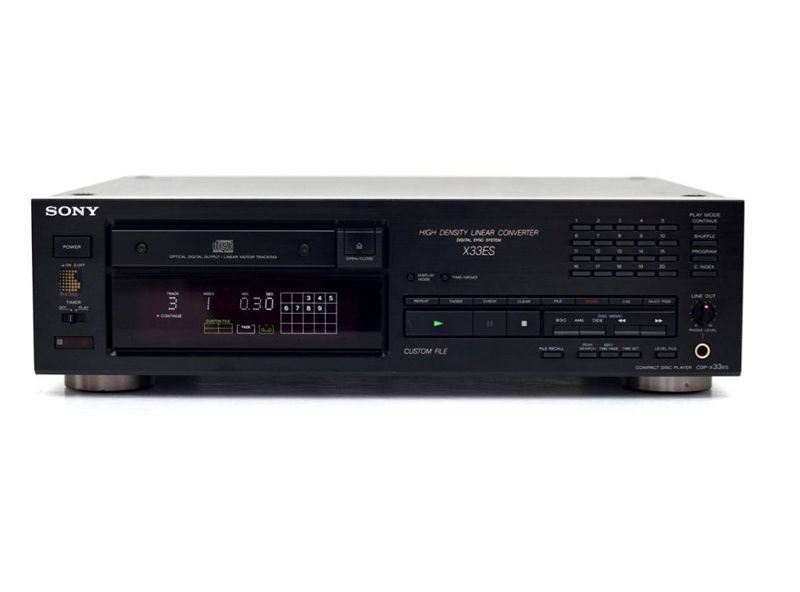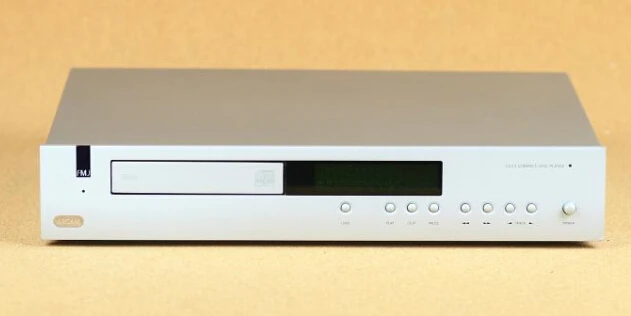The ambassador from Marantz is treating us like royalty. Only the KI-Signature badges set the CD player and amplifier out from the rest. Not for individuals who simply listen to music in the background. Both the amplifier (left) and the CD player have substantial copper plating and beefed-up power supply, which are trademark Marantz/lshiwata features. Ken Ishiwata, Marantz’s ‘ambassador,’ has developed some incredible audiophile deals with his latest Signature CD player and amplifier.
Marantz wondered back then, looking at a market dominated by devices built and calibrated mostly by nameless engineering teams in backrooms, “Where are all the audio personalities?”
Its response to this lack of character and humanity was to enlist the help of technical guru Ken Ishiwata to perform a ‘cost no object’ exercise on its current products, even though it took some persuasion to believe that a £500 version of a £300 CD player, or a £400 derivative of a £200 amplifier would be welcomed with open arms and open wallets.
The rest is modern audio history: the CD63MK11 KI-Signature CD player and PM-66 KI-Signature have both sold well in the short years since the exercise began, and ‘KSSig’ versions of the CD-17 and PM-17 have both been released. Ishiwata has (reluctantly) committed to signing sessions in hi-fi stores, as well as travelling across the world to, well, virtually everywhere except America, where they ‘do not get’ the KI-Signature thing.
A second-generation K1-Signature line is now available, based on the company’s Century line. The chunkier, flat-fronted Century appearance has replaced the relatively archaic aesthetic of the original Ki-Sigs – after all, they were based on goods as ancient as three generations – and has been replaced by the chunkier, flat-fronted Century look. There’s also a new KI Signature badge with a sophisticated italic style that manages to be both smaller and more elegant than the old logos.
The best part is that the prices are identical to those of original KI products: the CD6000KI CD player costs £500, while the PM60I0KI amplifier costs £400. Oh, and Ken Ishiwata, who was previously known just as “of Marantz,” now has a new job title. The new business cards will say ‘Ken Ishiwata, Brand Ambassador,’ according to the corporation.
The CD6000 OSE player is good, but it has never managed to grab the public’s imagination in the way that Marantz players did in the past. The CD6000 KI, on the other hand, is a completely other beast, with free-breathing power and clarity designed to make the most of a wide spectrum of music, as well as excellent capacity to reveal low-level information. The full-floating VAM1201 transport mechanism was kept from the ‘donor’ player. It’s built for quick access and great playability, with a single-bit conversion system that runs in dual-differential mode for low-level linearity and little distortion.
The output stage employs the well-known Marantz HDAM amplifier modules, with optical and electrical digital outputs for connection to compatible recorders such as CD-R’VV or MiniDisc players. When discs that have been encoded in this way are loaded, the player’s dot-matrix display will show CD-Text readouts.
So that’s how the player comes out of the factory; after that, it gets a near-complete strip-down in the UK, where a series of enhancements are made, starting with mirror-finish copper-plating of the chassis (after it’s been reinforced to damp resonances) for better interference rejection and earthing. The electronic fun begins with the replacement of the conventional transformer with a larger, higher-quality toroidal, the installation of better capacitors, and the regulation stage’s copper shielding.
The PM6010 is a good foundation for building a tuned amplifier because it comes standard with SOW per channel, a symmetrical layout, a toroidal power transformer, and full remote control of a complete Marantz system. The amplifier has a moving magnet phono stage, three line-ins, and a pair of tape loops with their own monitoring buttons, a source-direct button to bypass the tape selectors and balancing control, and a single set of pretty strong speaker terminals to keep the frills to a minimum.
There are no gimmicks or tone controls. The tuning required to build a PM6010KI is similar to that required to adapt a CD player, and the work is once again completed in the United Kingdom. There’s also a better transformer and capacitors, as well as copper plating for the chassis and regulation stage shielding, but this time some work has been done on the amp’s phase linearity, with the goal of improving image and stereo focus. Performance What does Ishiwata mean? It’s also the Marantz sound, which focuses on presenting music without coloring or overtones, allowing for the most direct communication possible between the recording and the listener.
Of course, standard goods must be created with cost limits in mind, which can limit their final performance: the goal of the ‘KI-Sig’ initiative is to squeeze as much performance as possible from the fundamental building blocks. This is exactly what the new items do, and they do it in elegance, just like their forefathers. Marantz equipment, particularly the KIs, can sound a little bright and forward to some ears, especially when contrasted to the more reserved sound of certain similarly priced British-made components.
If you prefer your music to be smooth and generous, not to mention non-intrusive, the KI CD player and amplifier are probably not for you: they are not designed to satisfy those who enjoy music as a background to other activities.
However, given that you’re reading this in Gramophone, it’s safe to assume that you value music above all else, so the KIs might be exactly up your alley. While the open, revealing character of the amplifier/CD player combo means that it won’t hide poor recording, if you’re seeking for good details of both a recording and a performance (and don’t want to break the bank), the Marantx pair has a lot to recommend it.
Though the evaluation samples had been used extensively before I received them, a few hours of use from cold quickly mellowed the initial hard edge into a sharp, but far from abrasive, treble. Simultaneously, the bass, which had been a little lean at first, filled out to become powerful and expansive, but without any boom or bloom.
This is a combination that can offer symphonic bass and percussion force without smearing or overhang: dramatic timpani or bass drum interjections have explosive power when needed, but the low-end is always tuneful and well-defined. The Marantz CD player/amplifier combination just sounds ‘correct,’ with a lively, natural balance that delivers a highly expressive rendition, whether with solo instruments or voices.
Feed the player with operatic drama – for example, the most current Solti Don Giovanni (Decca, 10/97) – and it will generate very convincing sonic visuals when combined with the amplifier. It’s also good with the Harnon court live Beethoven symphonies (Teldec, 11/91), in which every area of the orchestra is reproduced in exquisite detail, and the sensation of a performance is conveyed in a seductive manner. The same can be said about the delightful new Supraphon recording from the newly formed Smetana Trio, which features Smetana’s Piano Trio in G Minor. The recording has a taut, tightly controlled quality and a lovely sense of studio ambience, with just enough bloom and air to properly locate the performers in the soundstage.
The piano has a lovely mix of size and delicacy, while the violin and cello sing softly yet with a pleasing ‘bite.’ Is there a relationship between the junior and senior partners here? Certainly not: listening to the CD player and amplifier independently with components from various brands reveals that both have that perfect balance of freshness and control, power and poise that you’d expect from same-brand synergy.
The CD player is more dynamic and less edgy than the original CD-63 MkII KI Signature, which I had a sample of on hand for comparison, and the amplifier is more powerful than its official rating. As a result, it’s capable of driving speakers of a far higher quality than you’d anticipate from a £400 amp. However, with speakers like Tannoy’s £550 R3s or even the £230 mX3s, the combo would sound fantastic. Given that Mr. Ishiwata helped tune both of those designs, and Marantz is Tannoy’s European distributor, this isn’t surprising.
The two new models, like the original KI-Sigs, outperform their price range, making them great values for audiophiles (and, of course, music fans) on a budget. Take a listen; it’s easy to detect a strong sense of personal passion for music. If you enjoy your music played the way Ishiwata likes it – with the hairs on your neck standing up and the occasional shudder – you’re in for a treat.







